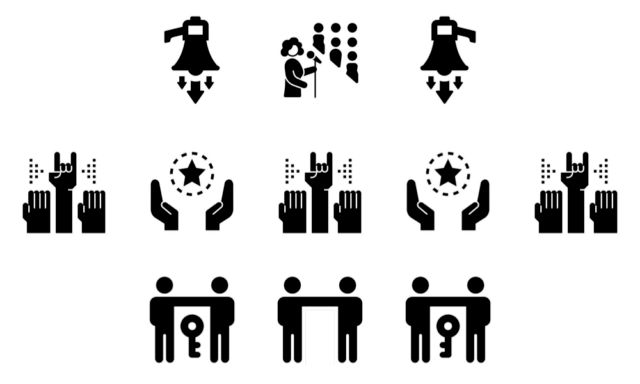
During the last eight months, I’ve been striving to save a tiny liberal arts school, Marlboro College, from closure. I’ve felt compelled to do this work, not only because the school sits at the heart of rural Marlboro, Vermont, where I’ve lived since 1978, but also because I taught there for ten years (1983-1993) and have a deep affection for the College’s rare form of education.
Someone could write a book about the twists and turns in this struggle, but it won’t be me. Instead, I’m going to share three criteria I uncovered about how to successfully work with others for change and action. When I say “successfully”, I’m not talking about whether “my” side won or lost. Rather, these are pragmatic criteria that can make the process of working with other people on a social or political goal somewhat easier and more productive.
1. Be sure that fundamental motivations are aligned
Attempting to work collaboratively and fruitfully on a complex issue? Take a little time to find out whether your potential collaborators share the same fundamental motivations as you!
It’s tempting to quickly accept any offer of help. At first, all seems well. Sometimes, though, it turns out that a potential collaborator who shares your goals has fundamentally different motivations. I’ve learned that when peoples’ motivations aren’t sufficiently closely aligned, friction and disharmony eventually surface.
When this occurs, you’ll realize that a significant amount of the time and effort spent building the collaborative relationship has been fruitless.
Of course, no two people have exactly the same motivations to work together on a project. Minor differences are often irrelevant, or resolved quickly. Deciding whether fundamental motivations are aligned, therefore, is ultimately a judgment call. However, ignoring motivational differences, no matter how severe, is a recipe for disappointment and frustration.
2. Check that people are willing to work

For example, during our campaign, many people made suggestions about legal grounds to sue those planning to close the school. Their ideas were plausible on the surface (certainly to a non-attorney like me). But they never offered to contact an attorney and discover whether there was indeed a legal case to make.
Those of us who did spend significant time talking to attorneys discovered that most of the proposed ideas were not good ones. Because we didn’t want to telegraph our legal strategy, it was difficult to openly repudiate the suggestions. The spate of proposals continued.
Ideas are welcome. Some supporters with good ideas simply don’t have sufficient free time to work, and that’s fine. But ultimately, someone needs to do the work of researching the plausibility of ideas and turning them into action. You may need to tolerate those who frequently opine without offering to do the work — but don’t spend too much time appeasing them.
3. Be able to work well with others in the group
There are numerous ways that folks who share common goals and motivations and are eager to work can still fail to collaborate successfully. I’ll mention a couple here.
One interesting requirement is a nuanced appreciation of confidentiality. When you’re working in an informal fluid group, you need to have a clear communal understanding of whom to trust with what. In my experience, some people don’t grasp the need for this and don’t think through the consequences of passing on information given to them in confidence. Though I’m sure everyone’s made this mistake at one time or another (I certainly have), someone who routinely breaks confidentiality is not a prime candidate for successful collaboration.
Personality clashes can be another collaboration breaker. For example, over the last eight months, a few people who had useful expertise and experience became more trouble than it was worth to work with because they unpredictably blew up at group members. Dealing with their outbursts significantly reduced the limited time working group members had available. Consequently, there was a reluctant but necessary passing of the ways.
Conclusion
There are, of course, many other factors involved in facilitating large-scale change. Even when a seemingly coherent group forms to address important issues, it still can be difficult to work with others for change and action. I hope the three criteria shared above help you use your energy for social and political activism more productively.

